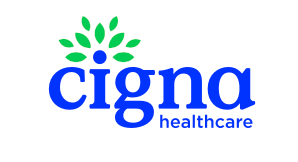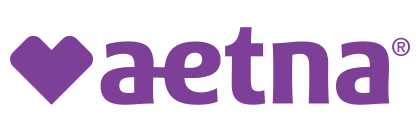What is Addiction?
Addiction is a chronic brain disease characterized by the compulsive use of a substance despite harmful consequences. It involves both physical and psychological dependence and often disrupts multiple aspects of life.
What is Chemical Dependency Addiction?
Chemical dependency addiction, also known as substance use disorder, is a condition in which an individual becomes physically and psychologically dependent on drugs or alcohol.
This addiction leads to the compulsive use of substances despite negative consequences on the person's health, relationships, and daily life.
Chemical dependency is characterized by a strong craving for the substance, the inability to stop using it, and withdrawal symptoms when not using it.
Treatment for chemical dependency addiction includes detoxification, therapy, and support programs to help individuals regain control over their lives and achieve lasting recovery.
Why Understanding the Stages of Substance Abuse Matters:
Recognizing the progression of substance abuse early on can save lives. Whether you're an individual seeking help or a loved one supporting someone, understanding these stages is the first step toward effective intervention and recovery.
If you or someone you know is struggling with substance abuse, reach out to a professional for guidance. The path to recovery begins with the first step.
What is Dependence?
Dependence occurs when the body and brain adapt to a substance, requiring more of it to achieve the same effects (tolerance) or causing withdrawal symptoms when it’s not used. This can happen with both prescription and illicit substances.
The 6 Stages of Substance Abuse:
Substance abuse doesn’t happen overnight—it typically follows a series of stages. Understanding these stages can help individuals, families, and professionals identify warning signs and seek appropriate help. Here’s an in-depth look at the 6 stages of substance abuse, their progression.

Signs of Dependence or Addiction: How to Recognize the Warning Signs Early
Recognizing the signs of dependence or addiction is critical for early intervention and effective treatment. Dependence and addiction impact physical, emotional, and social well-being, and understanding the symptoms can empower you to take action for yourself or a loved one.
Below, we explore the key indicators of substance dependence and addiction to help you identify when it’s time to seek help.
Signs of Dependence or Addiction
Increased Tolerance:
- Needing larger amounts of the substance to feel the same effects.(Ie..Drinking more alcohol or taking higher doses of a drug over time.)
Withdrawal Symptoms:
- Experiencing physical discomfort when the substance is not used.
- Common symptoms include nausea, sweating, tremors, irritability, or anxiety.
Changes in Appearance:
- Weight loss, poor hygiene, or a generally unkempt appearance.
- Bloodshot eyes, frequent nosebleeds, or unusual marks on the skin (e.g., from injections).
Health Issues:
- Recurring illnesses, infections, or unexplained fatigue.
- Long-term substance use can lead to liver, kidney, or heart problems.
Emotional and Psychological Signs of Dependence or Addiction
Mood Swings:
Frequent changes in mood, from euphoria to irritability or depression.
Anxiety and Restlessness:
Feeling anxious or agitated when not using the substance.
Cravings:
Intense urges or thoughts about using the substance, even during inappropriate times.
Loss of Interest:
Withdrawing from hobbies, activities, or relationships once enjoyed.
Social Signs of Dependence or Addiction
Strained Relationships:
Conflicts with family or friends due to substance use.
Loved ones expressing concern or distancing themselves.
Social Changes:
Associating only with people who use the substance or avoiding sober environments.
Work or School Issues:
Frequent absences, declining performance, or job loss.
When to Seek Help for Dependence or Addiction
If you recognize any of these signs in yourself or someone you love, it’s time to seek help. Addiction is treatable, and early intervention can make a significant difference. Look for these resources:
Behavioral Signs of Dependence or Addiction
Loss of Control:
- Inability to stop using the substance, even when trying to quit.
- Spending excessive time obtaining, using, or recovering from the substance.
Neglecting Responsibilities:
- Missing work, school, or family obligations due to substance use.
- Decline in job performance, academic success, or household duties.
Risky Behaviors:
- Engaging in dangerous activities while under the influence (e.g., driving or unsafe sexual practices).
- Legal or financial troubles stemming from substance use.
Secrecy and Isolation:
- Lying about usage or hiding substances.
- Avoiding friends or family to maintain privacy around substance use.
Types of Addictions: Common Substances, and Their Effects
Alcohol Addiction (Alcoholism)
Short-term: Impaired judgment, slurred speech, poor coordination, and memory loss.
Long-term: Liver damage, cardiovascular disease, cognitive impairments, and mental health disorders like depression and anxiety.
Nicotine Addiction
Substance: Tobacco and e-cigarettes (nicotine products).
Short-term: Increased alertness and relaxation.
Long-term: Lung disease, cancer, and cardiovascular problems.
Cannabis Addiction
Substance: Marijuana (THC-based products).
Short-term: Relaxation, altered perception, and increased appetite.
Long-term: Dependency, impaired memory, and mental health issues like anxiety or psychosis.
Sedative Addiction
Substances: Benzodiazepines (e.g., Xanax, Valium) and barbiturates.
Short -term: Relaxation, drowsiness, and reduced anxiety.
Long-term: Physical dependence, memory issues, and risk of overdose.
Opioid Addiction
Substances: Prescription painkillers (e.g., oxycodone, hydrocodone), heroin, fentanyl.
Short-term: Euphoria, drowsiness, confusion, and slowed breathing.
Long-term: Physical dependence, respiratory problems, and risk of overdose.
Stimulant Addiction
Substances: Cocaine, methamphetamine, prescription stimulants (e.g., Adderall, Ritalin).
Effects on the Person:
Short-term: Increased energy, alertness, and euphoria; heart rate and blood pressure spikes.
Long-term: Anxiety, paranoia, aggression, cardiovascular issues, and brain damage.
Inhalant Addiction
Substances: Household products like glue, paint thinners, and nitrous oxide.
Short-term: Euphoria, dizziness, and confusion.
Long-term: Organ damage, brain damage, and sudden death from cardiac arrest.
Hallucinogen Addiction
Substances: LSD, psilocybin (magic mushrooms), MDMA (ecstasy), PCP.
Short-term: Altered perception, hallucinations, and emotional swings.
Long-term:
Flashbacks, persistent psychosis, and potential addiction (MDMA, PCP).





